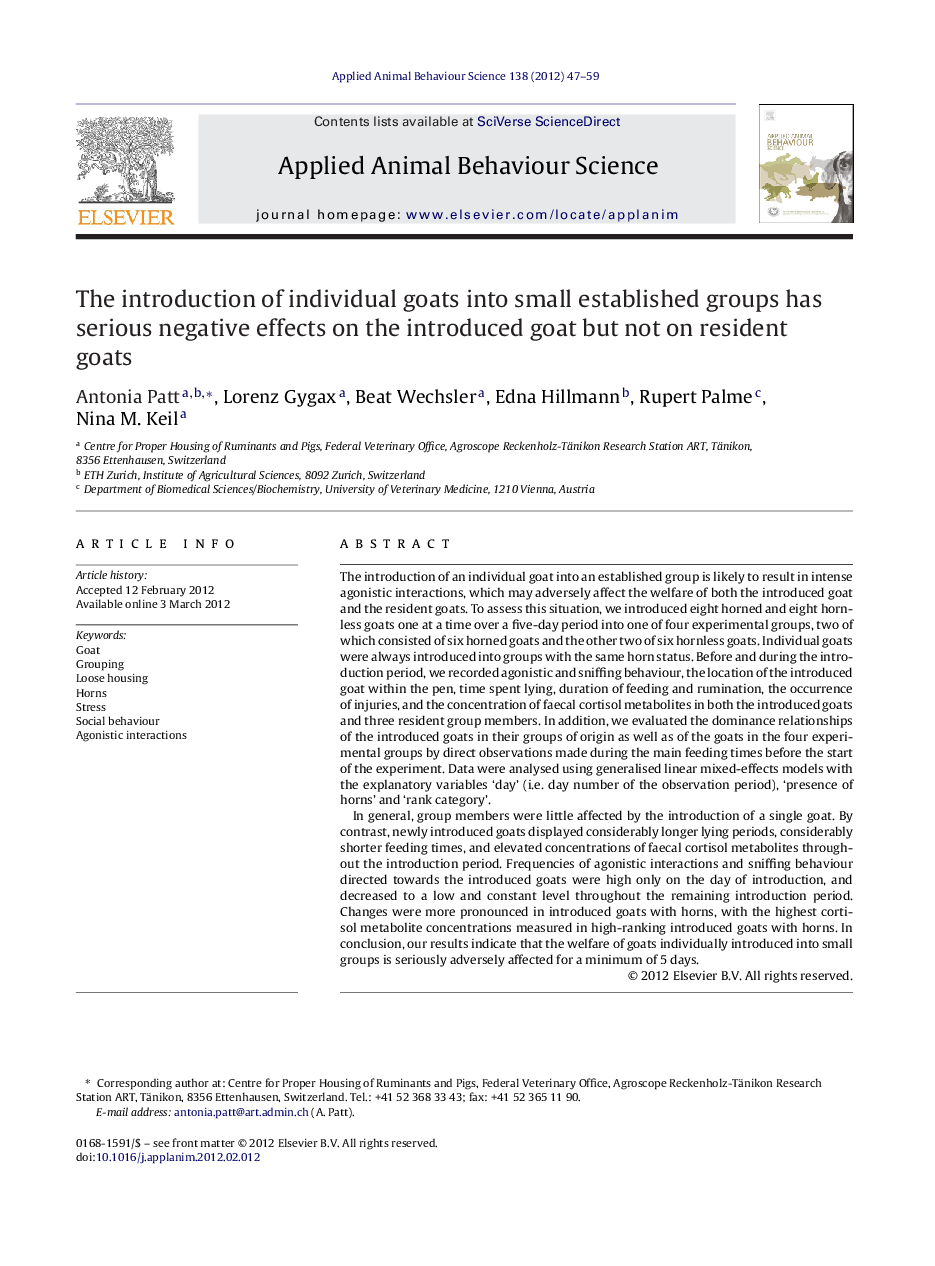| Article ID | Journal | Published Year | Pages | File Type |
|---|---|---|---|---|
| 4522985 | Applied Animal Behaviour Science | 2012 | 13 Pages |
The introduction of an individual goat into an established group is likely to result in intense agonistic interactions, which may adversely affect the welfare of both the introduced goat and the resident goats. To assess this situation, we introduced eight horned and eight hornless goats one at a time over a five-day period into one of four experimental groups, two of which consisted of six horned goats and the other two of six hornless goats. Individual goats were always introduced into groups with the same horn status. Before and during the introduction period, we recorded agonistic and sniffing behaviour, the location of the introduced goat within the pen, time spent lying, duration of feeding and rumination, the occurrence of injuries, and the concentration of faecal cortisol metabolites in both the introduced goats and three resident group members. In addition, we evaluated the dominance relationships of the introduced goats in their groups of origin as well as of the goats in the four experimental groups by direct observations made during the main feeding times before the start of the experiment. Data were analysed using generalised linear mixed-effects models with the explanatory variables ‘day’ (i.e. day number of the observation period), ‘presence of horns’ and ‘rank category’.In general, group members were little affected by the introduction of a single goat. By contrast, newly introduced goats displayed considerably longer lying periods, considerably shorter feeding times, and elevated concentrations of faecal cortisol metabolites throughout the introduction period. Frequencies of agonistic interactions and sniffing behaviour directed towards the introduced goats were high only on the day of introduction, and decreased to a low and constant level throughout the remaining introduction period. Changes were more pronounced in introduced goats with horns, with the highest cortisol metabolite concentrations measured in high-ranking introduced goats with horns. In conclusion, our results indicate that the welfare of goats individually introduced into small groups is seriously adversely affected for a minimum of 5 days.
